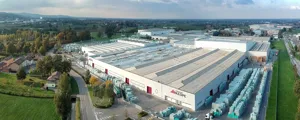Green building, also known as bioarchitecture, is a design and construction approach that focuses on reducing the environmental impact of buildings by promoting the use of natural materials and sustainable practices. This approach combines ecological, biological and architectural principles to create healthy, eco-friendly living spaces that integrate seamlessly with their surroundings.
The fundamental principles of green building are:
-
Use of natural and recyclable materials.
-
Reduction of CO2 emissions throughout the building’s life cycle.
-
Enhanced energy efficiency and reduced consumption.
-
Creation of healthy and comfortable indoor environments for occupants.
-
Promotion of local resources and traditional building techniques.













